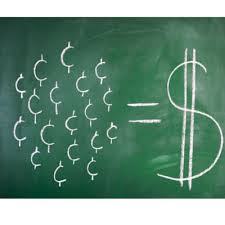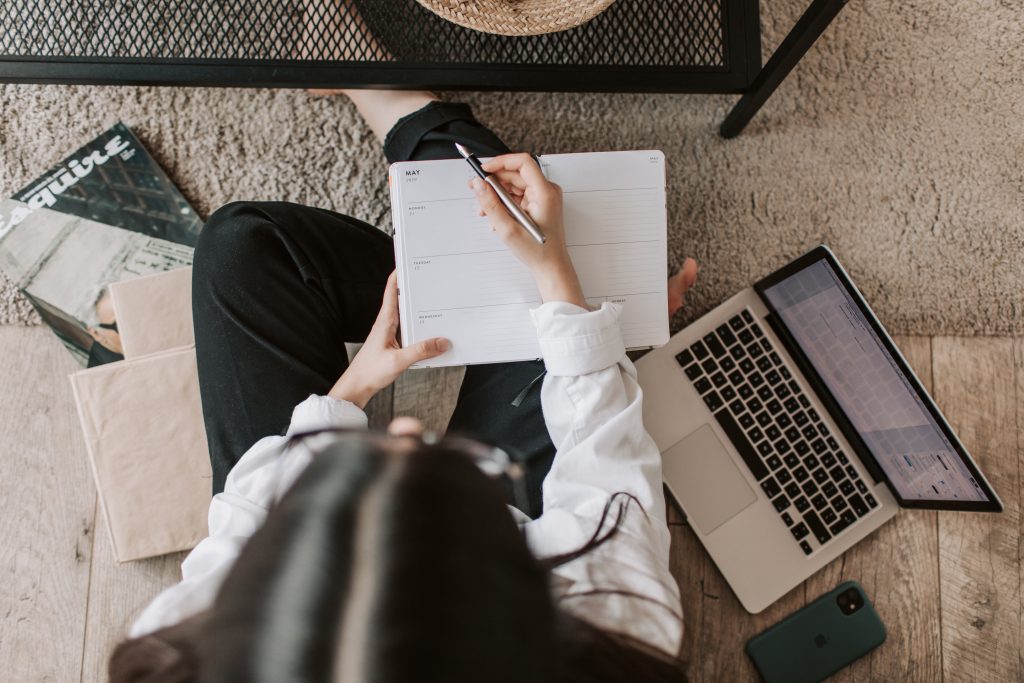Nonprofit organizations have continued to play a crucial role in our society by addressing various social and community needs. While donations and grants are often the primary sources of income, nonprofits may occasionally need to consider a nonprofit bridge loan to support operations, expand programs, or address challenges.
Since 2012, Financing Solutions, a direct lender, has been the largest provider of lines of credit to nonprofits, and we frequently receive calls for various types of financing needs.
We want to cover what a bridge loan is and how it compares to a line of credit. This article outlines the various types of loans available to nonprofits, as well as the process for obtaining approval for a nonprofit loan, including nonprofit fixed loans, nonprofit bridge loans, nonprofit mortgages, and nonprofit lines of credit.
Summary
Understanding Nonprofit Loans, Bridge Loans, Lines of Credit
Nonprofit loans, also known as fixed loans, are a type of financing designed to invest in capital projects or capitalize on long-term growth opportunities that your regular income sources may not be able to cover. These fixed loans require a regular fixed repayment with interest over a specified period. Unlike a line of credit, a nonprofit loan is typically used when a lump sum of money is required, and the full amount will be utilized all at once. A fixed loan differs from a mortgage in that the payback period is usually 3-5 years, whereas a mortgage typically has a term of up to 30 years. Additionally, it is worth noting that a fixed loan is often a smaller amount of money than a mortgage.
whereas a mortgage typically has a term of up to 30 years. Additionally, it is worth noting that a fixed loan is often a smaller amount of money than a mortgage.
A line of credit is used to address short-term cash issues often associated with fluctuations in cash flow. A line of credit serves as a cash backup plan, ensuring that when cash is low, your nonprofit can still cover its essential expenses, such as program costs or payroll. A line of credit is a pre-approved amount of money that has been approved in advance, which can be used whenever needed and for any purpose, in any amount. Unlike a fixed loan or a cash advance, when one pays off the line of credit, they are only paying off the remaining principal, and there are no additional early payment penalties.
Different Types of Lenders for Bridge Loans and Nonprofit Loans
There are four primary types of lenders for business and nonprofit loans that leaders often consider. Commercial/local banks or credit unions, privately funded lenders, CDFI (Community Development Financial Institutions), and not-for-profit lenders.
Financial institutions often use the term underwriting criteria. Underwriting refers to the process by which the lender evaluates your loan application to determine approval.
The key for nonprofits to understand is that they will likely face significant challenges in securing bank approval due to the stringent loan requirements of commercial banks. Additionally, CDFIs and not-for-profit lenders are also selective in their lending practices.
Financing Solutions is a privately funded lender, which means that private individuals provide their funding; thus, Financing Solutions is more flexible in its underwriting criteria.
Difference Between Nonprofit Loans And Traditional Commercial Loans?
You should know that commercial bank underwriting for loans to nonprofits or commercial businesses is viewed in the same manner. In both cases, commercial banks will require excellent past cash flow, collateral, and guarantees. Collateral refers to the act of providing an additional asset to secure a loan in the event of default. Guarantees represent a personal guarantee (PG), so that if the loan defaults, the bank can place a lien on the cosigners’ assets to recover its funds.
As a nonprofit, you might be thinking, ‘I can demonstrate good cash flow, but I’m unable to provide collateral or personal guarantees.’ You will likely find that a bank will not approve you for any type of financing in this case.
Financing Solutions Line of Credit Application Process
If you plan to apply for a line of credit with Financing Solutions, our approval process is fast and straightforward.
First, fill out the 2-minute online application. No paperwork is required, and we do not conduct a personal or business credit check in the offer letter phase. We will respond to all applicants in hours with an answer, regardless of whether you are approved or not. If you are not approved, we will inform you of the reason. If we believe you will be approved, we will schedule a time to discuss the matter with you. At that meeting, we will want to learn more about your organization and its funding sources, and then we will review our line of credit program.
We will then send you a no-obligation offer letter, which will explain everything in easy-to-understand terms. If you decide to move forward, the Executive Director will sign the no-obligation offer letter on behalf of the nonprofit. At that point, we will run a credit check on the ED. The ED is not personally liable for the line of credit unless they commit fraud. Note: Since this is an unsecured line of credit, Financing Solutions must ensure that the organization’s leader is creditworthy. We do not file any liens against the ED, nor do we report any balances to any credit agencies.
We will then request the most recent Form 990, four months of recent bank statements from the nonprofit, your driver’s license, and a voided check from the nonprofit. After reviewing the information, we will send a final contract. Once the final agreement is signed, we will require board approval from the majority of the board.
The Application Process With Other Lenders
Applying for a nonprofit loan requires careful planning and a thorough understanding of the organization’s financial position. Here’s a step-by-step guide to navigating the application process from most lenders.
Assess Your Financial Health
Before seeking a loan, assess your nonprofit’s financial health. Review your balance sheet, income statement, budget and cash flow statement to understand your current financial position. Lenders will scrutinize these documents, so make sure they accurately reflect your organization’s financial stability.
Determine Your Loan Needs
Identify the specific purpose of the loan and the amount you need. Create a detailed budget outlining how you plan to use the funds, including estimates for repayment.
Research Potential Lenders
Explore nonprofit-friendly lenders, such as Community Development Financial Institutions (CDFIs), banks, and credit unions that specialize in serving nonprofits. However, each lender may have different eligibility criteria and terms, so compare options to find the best fit. Be prepared for this effort because it is going to take a long time to find an institution that will work with nonprofit organizations.
Collateral and Personal Guarantees
See if you can offer any asset as collateral and if anyone in your organization has good credit and is willing to provide a personal guarantee.
Gather Necessary Documents
Prepare all the required documents, which typically include your nonprofit financial statements, 990s, budget, budget plan, bank statements, and proof of nonprofit status. Lenders may also request board resolutions and personal financial information from key individuals within the organization.
Developing a Strong Loan Proposal
Craft a compelling loan proposal that outlines your organization’s mission, the purpose of the loan, and how it will benefit your nonprofit and the community it serves. Highlight your repayment plan and any collateral you can offer. Keep in mind that banks lend money based on financial considerations, not noble causes.
Apply for the Loan with Other Lenders
Submit your loan application to the selected lender. Be prepared for a thorough review process, which may involve meetings, interviews, and additional document requests. You find it will take a lot of effort before you really get a straight answer.
Review and Negotiate Terms
Carefully review the loan terms the lender offers, including interest rates, repayment schedules, and associated fees. Negotiate terms if necessary to ensure they align with your nonprofit’s financial capacity.
Secure Approval
Once the lender approves your loan application, you must meet any remaining conditions, such as providing insurance, additional documentation, audited yearly reviews. After completing these requirements, you’ll receive the loan funds.
Key Considerations
While seeking a nonprofit loan, keep these crucial considerations in mind:
Repayment Capacity
Ensure your nonprofit has a reliable source of income to repay the loan on time. Lenders will assess your ability to meet repayment obligations.
Collateral Availability
Some loans may require collateral, such as real estate or equipment. Understand the collateral requirements and evaluate whether your nonprofit can meet them.
Interest Rates
Compare interest rates from different lenders and choose the one that offers the most favorable terms. Remember that lower interest rates can significantly reduce the total cost of borrowing.
Impact on Mission
Evaluate how taking on a loan aligns with your nonprofit’s mission and long-term goals. And most importantly, ensure the benefits of the loan outweigh the costs.
Legal and Regulatory Compliance
Nonprofits must adhere to specific legal and regulatory requirements when borrowing money. Consult legal counsel to navigate these complexities.
Do You Want To Apply For a Nonprofit Line of Credit?
Inadequate funding is a significant constraint to nonprofits’ operations. However, unlike for-profit businesses, many financing institutions find it challenging to advance loans to nonprofit organizations because nonprofits are not profit-oriented organizations. As a result, lenders see loan offers to nonprofits as a high-risk undertaking.
But Financial Solutions, understands nonprofits. That is why we offer lines of credit tailored to your organizational needs. Additionally, our lines of credit are highly flexible, providing your nonprofit with the financial freedom to pursue its mission, expand its programs, and make a lasting impact on the communities it serves. Whether you need to cover operational expenses or access funds when your cash flow is temporarily down, our lines of credit are here to support you and serve as a cash backup plan.
With Financing Solutions’ Nonprofit Line of Credit, nonprofit organizations always have the benefits of a more straightforward application process, plus:
- There are no costs to set it up or keep it in place
- There’s an easy 2-minute online application
- If approved, you’ll receive a same-day, no-obligation offer letter
- The fastest setup, 48-72 hours
- Once you get the line of credit, requests for funds are wired to your bank on the same day
- You can use your line of credit whenever needed
- Inexpensive when used (low fees)
- There are no restrictions in place or collateral required
- No personal guarantee is required (unless you commit fraud)
- We are a reputable company with an A+ & 5-star rating
- The credit line renews yearly and is easy to renew
- You have secured portal access 24×7




